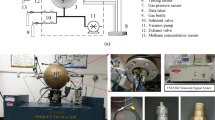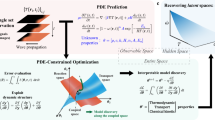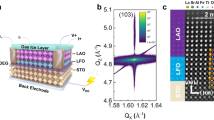Abstract
IT is now well known that intense shock waves can be produced by bursting diaphragms1 and that very high temperatures, up to perhaps 20,000° K., can be attained in this way2. The temperature rise occurs in a very short time, corresponding to only about twenty intermolecular collisions. Kantrowitz and colleagues have focused attention on the value of work with shock waves and shown that in some cases they may be sufficiently intense to cause emission of light3. The highest temperatures are attained with monatomic gases; with polyatomic gases the higher specific heat and especially the dissociation of the gas limits the temperature. Some preliminary studies of the spectra excited in rare gases have been made4, and recently Greene5 has observed emission bands of C2, CH and CN when passing shocks through CF3I, CH3I or BrCN.
This is a preview of subscription content, access via your institution
Access options
Subscribe to this journal
Receive 51 print issues and online access
$199.00 per year
only $3.90 per issue
Buy this article
- Purchase on SpringerLink
- Instant access to full article PDF
Prices may be subject to local taxes which are calculated during checkout
Similar content being viewed by others
References
Payman, W., and Shepherd, W. C. F., Proc. Roy. Soc., A, 186, 293 (1946).
Resler, E. L., Lin, S. C., and Kantrowitz, A., J. App. Phys., 23, 1390 (1952).
Perry, R. W., and Kantrowitz, A., J. App. Phys., 22, 878 (1951).
Hollyer, R. N., Hunting, A. C., Laporte, O., and Turner, E. B., Nature, 171, 395 (1953).
Greene, E. F., J. Amer. Chem. Soc., 76, 2127 (1954).
Author information
Authors and Affiliations
Rights and permissions
About this article
Cite this article
FAIRBAIRN, A., GAYDON, A. Comparison of the Spectra produced by Shock Waves, Flames and Detonations. Nature 175, 253–254 (1955). https://doi.org/10.1038/175253a0
Issue date:
DOI: https://doi.org/10.1038/175253a0



